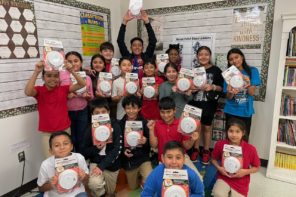In a world where ever-increasing responsibilities have today’s parents juggling multiple tasks at once, educational opportunities can often get lost in the day-to-day shuffle. However, it is important to recognize and capitalize on the teachable moments.
Here are some tips for using household items and everyday life situations to maximize educational opportunities in your household.
Tip 1: Students learn faster and grasp concepts easier if visual aids are used during the priming process when introducing learning concepts. Use your child’s favorite cereal to help teach simple addition, subtraction, multiplication and division concepts.
Allow your children to enjoy finding the sum and difference while practicing adding and subtracting the cereal pieces.
Cereal can also be used to teach multiplication and division concepts. For example, if you wanted to teach 3×4=12. Put cereal pieces in 3 groups of 4 and have the child count the pieces and then put the cereal in 4 groups of 3 and allow the child to count the pieces of cereal.
Talk about how the answer (product) does not change based upon the arrangement of the cereal pieces.
Using cereal as a visual aid allows children to see the math problem in a tangible form which will generally assist them in grasping the overall concept. If you are short on time, practice math concepts with snacks or use the food on their plate during dinner time.
Once they have grasped the concept, it is important to reinforce and build upon it.
Tip 2: Try using actual pizza to teach slices. You would be amazed at how quickly a child can equally divide a large pizza into four equal shares. Sandwiches, waffles and pancakes are also great items that can be used to teach fractions.
The trick is to make the fractions tangible and interesting. By sparking interests, children easily become engaged and have fun learning with little effort.
Tip 3: One of the best ways to practice percentages is to allow children to find something they want to purchase and figure out how much it will cost on sale, with a discount, or with a percentage off coupon. Often, students question the practicality of algebra.
Applying it to an everyday situation and then having them practice it will engage them and allow them to become more familiar with the mechanics of problems solving.
About the Author
Shauntel Miller is the president of Keystone Solutions. To gain more educational insight or share your educational ideas visit theexperteducator.com.





